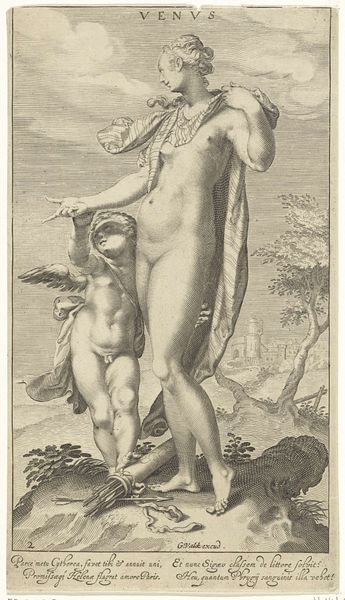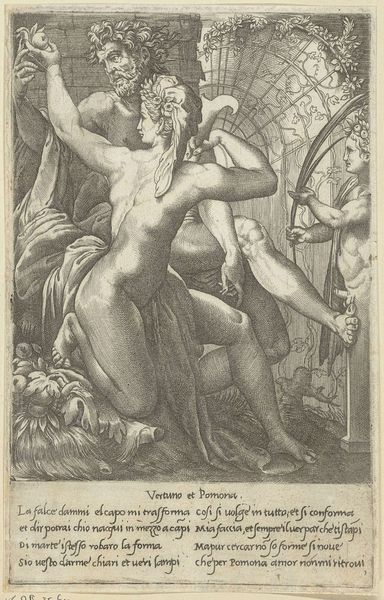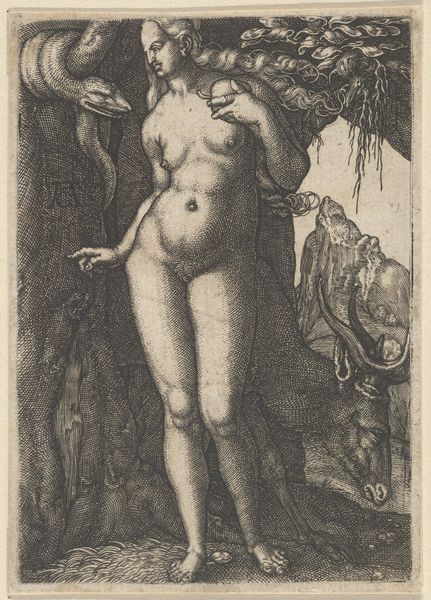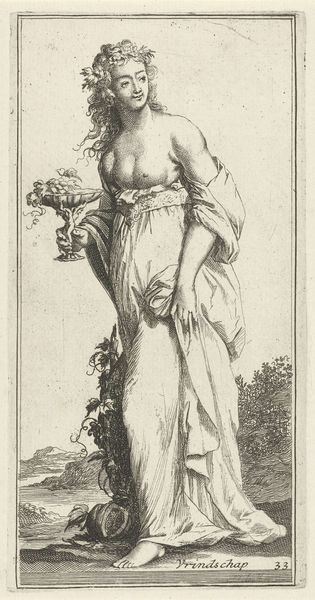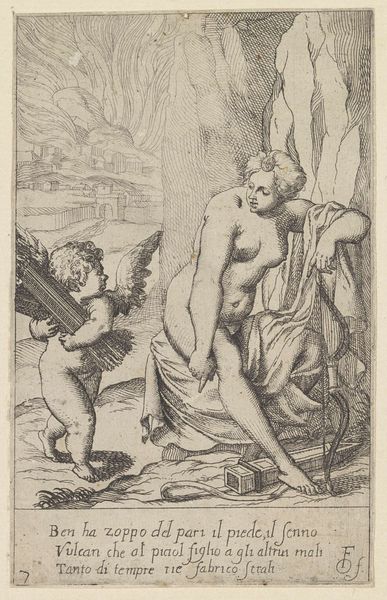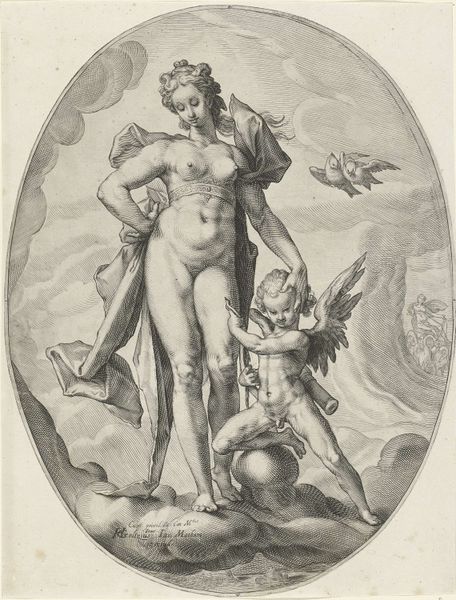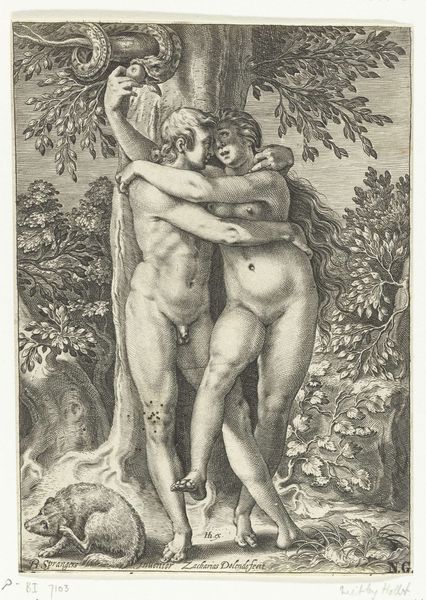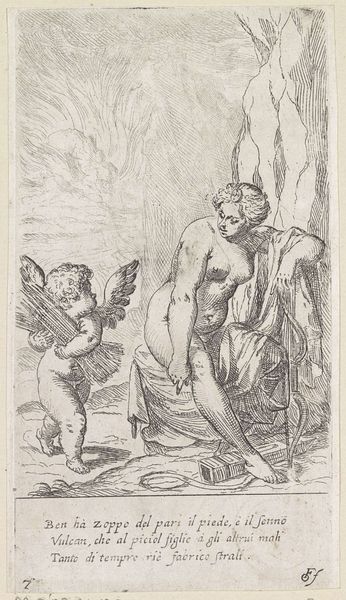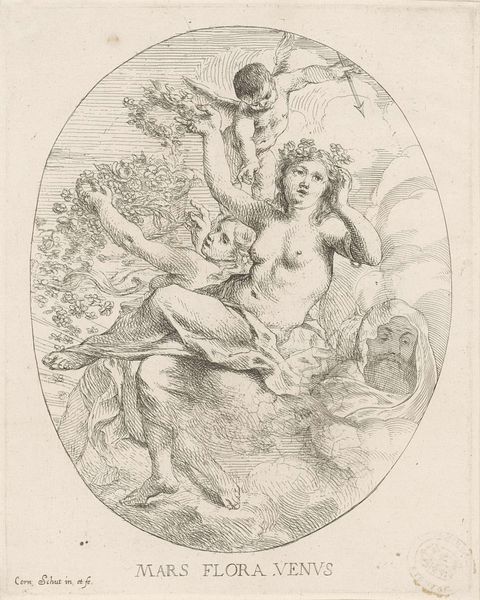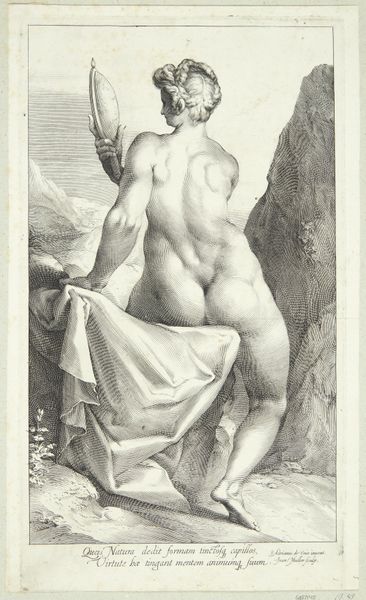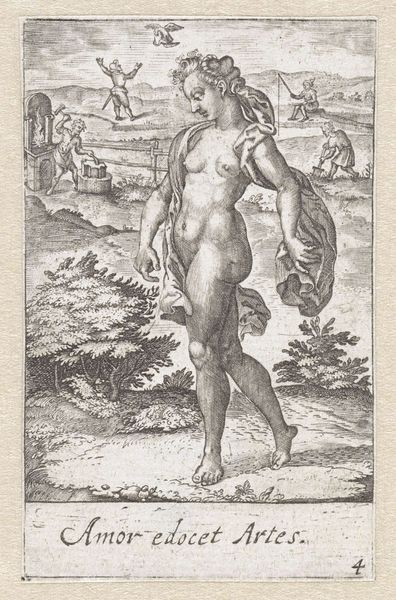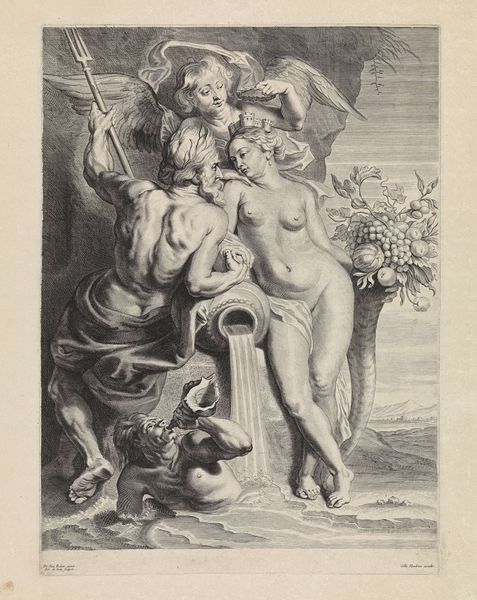
engraving
#
portrait
#
baroque
#
figuration
#
portrait reference
#
portrait drawing
#
history-painting
#
nude
#
engraving
Dimensions: height 246 mm, width 142 mm
Copyright: Rijks Museum: Open Domain
Editor: Here we have Willem van Swanenburg's engraving, "Minerva bij een boom," made sometime between 1595 and 1612. I’m struck by the somewhat contradictory message. We have the goddess of wisdom, but depicted nude. How should we interpret this choice? Curator: The use of classical figures like Minerva was a powerful tool for conveying messages about authority and civic virtue in the early modern period. The depiction of Minerva, or Pallas, as nude isn't simply about titillation. It's drawing on a tradition where the nude form signifies truth, purity, and a return to classical ideals, aligning the subject with the perceived intellectual superiority of antiquity. How does the setting—note the shield with Medusa's head—further inform your understanding of power dynamics in this piece? Editor: The Medusa shield adds an element of protection and strength, linking Minerva to both intellect and military prowess. But doesn't the artistic choice of nudity risk undermining the intended gravitas? Could viewers interpret this as objectification rather than empowerment? Curator: That's a crucial consideration. We must think about the cultural context. While a modern audience might critique the objectification, the initial viewers, steeped in classical imagery and humanist ideals, likely understood the nudity within a specific framework of virtue and knowledge. Consider, for instance, how representations of male figures, even rulers, also employed nudity to convey strength and moral rectitude. The question becomes: who was the intended audience, and what political or social messages might Swanenburg be conveying about ideal governance or perhaps about the relationship between knowledge and power? Editor: That's fascinating! It pushes me to look beyond the surface and consider the layers of historical and cultural meaning embedded in this engraving. I hadn't thought about the specific lens through which contemporary audiences would have understood it. Curator: Precisely. And by grappling with those complexities, we get a richer understanding not just of the artwork, but of the society that produced and consumed it. Thank you for allowing me to clarify it further!
Comments
No comments
Be the first to comment and join the conversation on the ultimate creative platform.
